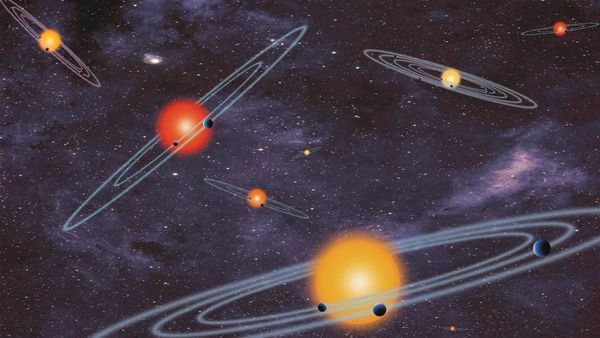Mathematicians find 12,000 new solutions to ‘unsolvable’ 3-body problem::Calculating the way three things orbit each other is notoriously tricky, but a new study may reveal 12,000 new solutions.
This is one of those headlines that’s more obscuring than enlightening. We knew a bunch of ways that you could arrange three gravitational bodies and have them be in a stable orbit around each other. This adds 12,000 more. However, a general solution is still incredibly complicated, and the Trisolarans would still like to have a little chat with us in Australia some time.
Title is wrong. Unsolvable means no general closed form solution. That doesn’t mean that single constellations cannot be proven stable.
There is for example a trivial solution to the n-body problem. Arrange all bodies equidistant on a circle and have them move at the speed that keeps them on the circle.
Damn it, I just started Cixin’s book and now these jerks are going to spoil it;)
I didn’t think that book lived up to the hype. But maybe I just didn’t get it.
I thought the first book was pretty meh with big ideas but mid execution, but holy hell was the sequel exciting and leagues ahead in terms of quality. Really delivers on what the first novel sets up.
Idk it was fun for me. I thought it was interesting being from China, I’m not that well read so the Chinese author put a cool perspective on the novel.
I think it’s similar to a lot of golden age SF novels from Clarke, Asimov, etc. Big, fantastic ideas combined with characters that are cardboard cutouts.
It was pretty meh.
You clicked the thread!
And me too, I’m just at the beginning of the second book lol
I guess we’ll just go with the first one.
Now onto the four body problem!
Wsn’t it solved long ago? There’s even an old KSP mod ‘Pricipia’ for it.
You can simulate a specific arrangement of n-bodies, where n > 2. Depending on how accurate you want it to be, you may need a supercomputer.
If n = 2, then you can work it out on a napkin. If n = 1, you can draw a circle, point at it, and say “I figured it out!”
So they mean there’s no general solution. That doesn’t mean that we can’t find specific solutions.
As for your notion of solved, that’s solved in a numerical sense.
Spoiler alert…?
Isn’t this already solved by total gravitational mass anyway? I’m not understanding what this article even means. You have 3 bodies that are constantly losing mass, and any difference in equilibrium means they fall out of orbit with each other. 3 bodies of exactly or near the density would decay at the same rate. I’m a laymen, but help me out here.
PBS has a good video on it: https://youtu.be/et7XvBenEo8?si=w2ZJDnYQbWDY3TgR
The summary is that scientists don’t have a single, simple equation that they can use to precisely predict the orbits of three bodies based on the initial positions and velocities of those bodies like they can with only two bodies (the two-body problem). The solutions they have are either approximate solutions (not precise, but close enough to be useful), equations that apply only to specific types of orbits and therefore can’t be used to predict other three-body orbits, and a general equation that is so ridiculously long that it is not really usable. I am also just a layman, so take my summary with a grain of salt, but hopefully the video will help.
Here is an alternative Piped link(s):
https://youtu.be/et7XvBenEo8?si=w2ZJDnYQbWDY3TgR
Piped is a privacy-respecting open-source alternative frontend to YouTube.
I’m open-source, check me out at GitHub.








